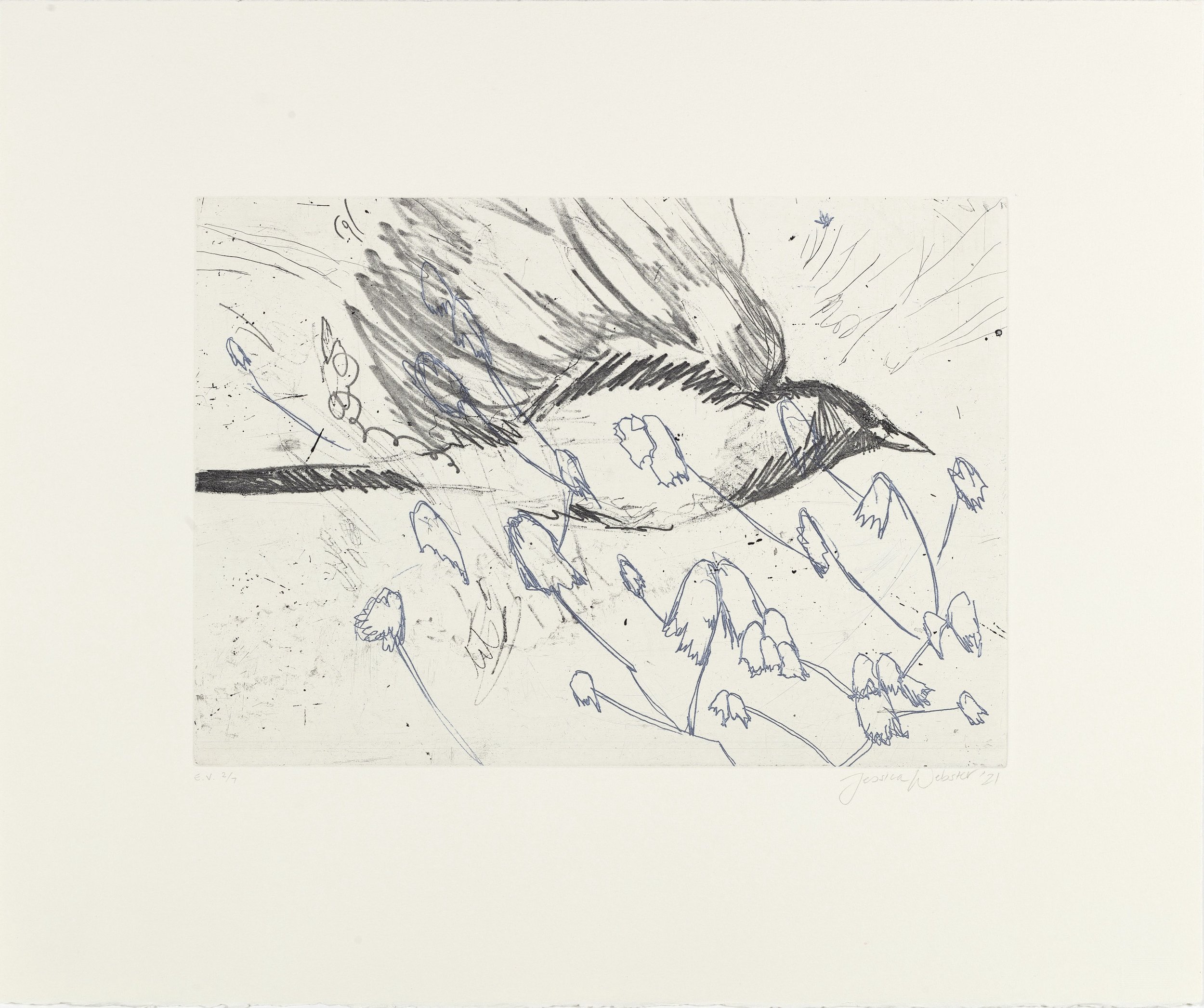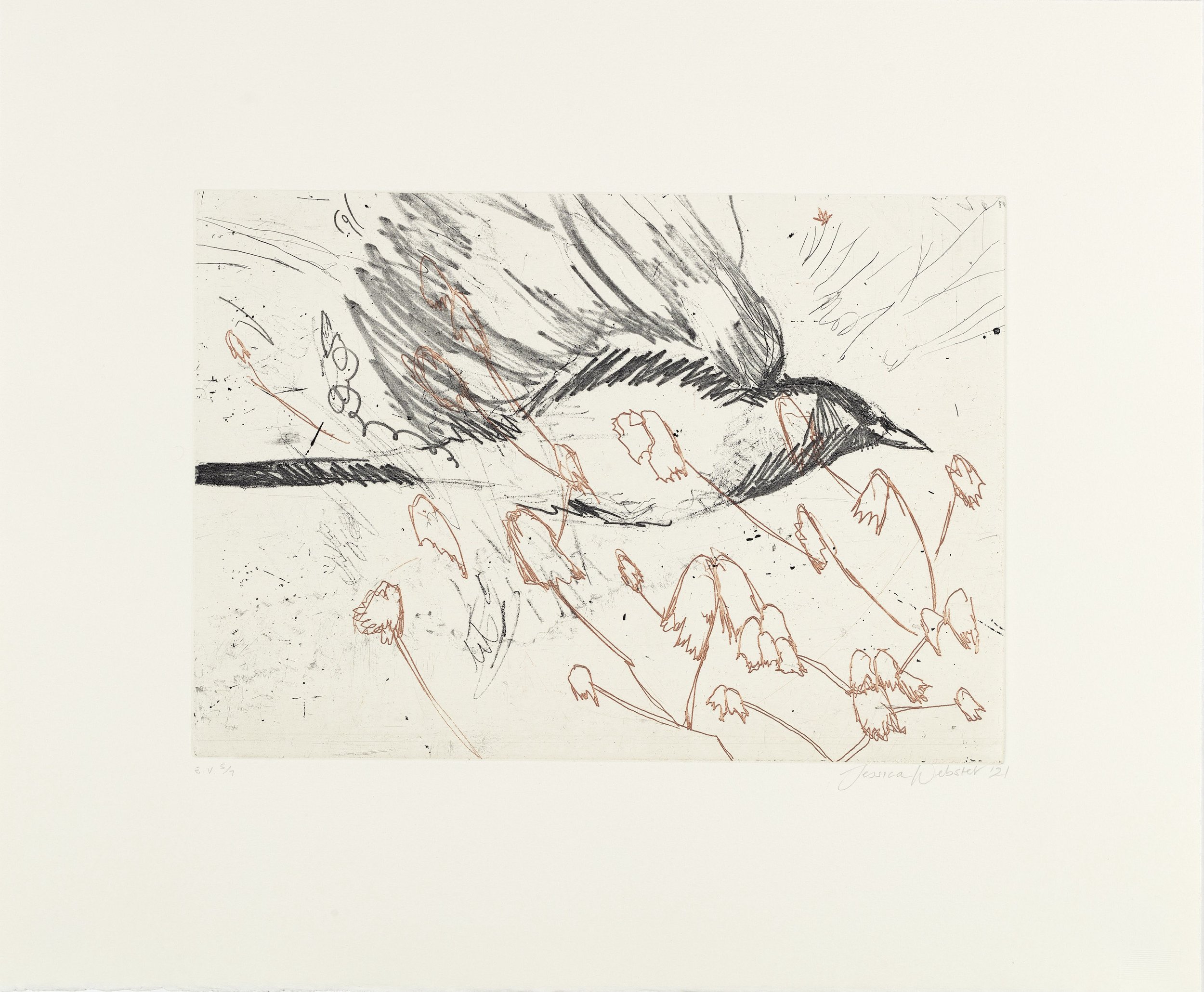JESSICA WEBSTER
JESSICA WEBSTER
Dr Jessica Webster (PhD) (b.1981) is a conceptual-aesthetic painter. Wide-ranging in theme and colour, the work deals with psychological experience. Webster’s practical approach to every body of work is made productive by limitations set upon her body as a survivor of violence, being wheelchair-bound. The ghostly traces of intense labour in movement and gesture establishes the formal signature of her work. She has held 6 solo shows since 2009, exhibiting with David Krut Projects and more recently, three critically acclaimed exhibitions over six years with the Goodman Gallery. Webster is currently a postdoc fellow at Stellenbosch University, where she is researching participatory art processes and science communication. Her work is held in private and public institutions locally and internationally.
Jessica Webster : Candy Lizard Place, 2021
These works form part of a wide view and deep interest in bourgeois desire and its relation to land and environment.
Where gated estates mimic private parks, 4x4s clog up suburban traffic, ‘adventure’ holidays with curated views at a premium… A commercial space company launches a disco ball into space, creating a glittering light brighter than any other visible in the sky. French shoppers across the nation beat each other up over discounted Nutella.
A symbolic connection to land is under the duress of excess and deficit. It prompts a deadpan analysis of romance and the landscape as simulated, man-made, and predisposed to break down.
In my process, the ‘distress’ of the symbolic landscape becomes an act of palimpsest and damage. I abstract imagery from landscape pictures, archival photographs, Pop graphics, Neo-classical painting and gaming apps. I allude to the artificial intensity of Candy Crush©, its design-format of cubic segmentation, golden proportions and evanescent layers. The stubborn emergence of surface provokes an uneasy cohabitation of these themes.
An insistence on the anti-aesthetic and the raw exposure of labour undermines the blind consumption of spectacular things and shallowly shining surfaces. The work is therefore structured to provoke looking but evoke a complex range of sensations between seduction and repulsion, what Sigmar Polke called ‘Capitalist Realism’.

Jessica Webster, 2021 | Untitled (Metamorphosis in Colour V) | etching with chine-collé and pencil | 63,5x49cm | monoprint | R9,000

Jessica Webster, 2021 | Untitled (Metamorphosis in Colour II) | etching with chine-collé and pencil | 63,5x49cm | monoprint | R9,000

Jessica Webster, 2021 | Untitled (Metamorphosis in Colour IV) | etching with chine-collé and pencil | 63,5x49cm | monoprint | R9,000

Jessica Webster, 2021 | Untitled (Metamorphosis in Colour I) | etching with chine-collé and pencil | 63,5x49cm | monoprint | R9,000

Jessica Webster, 2021 | Untitled (Metamorphosis) | etching | 63,5x49cm | edition of 6 | R6,500

Jessica Webster, 2021 | Untitled (Bird in Flight) | etching | 51,5x62cm | EV2/7 | R6,500

Jessica Webster, 2021 | Untitled (Bird in Flight) | etching | 51,5x62cm | EV5/7 | R6,500

Jessica Webster, 2021 | Untitled (Flowers in the Wind) | etching with chine-collé and pencil | 51,5x62cm | Monoprint | R12,200 framed

Jessica Webster, 2021 | Untitled (Red Blossoms) | etching with chine-collé and pencil | 51,5x62cm | Monoprint | R9,000

Jessica Webster, 2021 | Untitled (Rainbow) | etching with chine-collé and pencil | 51,5x62cm | Monoprint | R9,000

Jessica Webster, 2021 | Untitled (Flowers and Lizards) | etching with chine-collé and pencil | 51,5x62cm | Monoprint | R9,000

Jessica Webster, 2021 | Untitled (Fire) | etching with chine-collé and pencil | 51,5x62cm | Monoprint | R9,000

Jessica Webster, 2021 | Untitled (Pig I) | watercolour monotype | 36x38,8cm | edition of 1 | R5,000

Jessica Webster, 2021 | Untitled (Pig II) | watercolour monotype | 36x38,8cm | edition of 1 | R5,000

Jessica Webster, 2021 | Untitled (Bird) | watercolour monotype | 65x56,5cm | edition of 1 | R15,000

Jessica Webster, 2021 | Untitled (In the Wild) | watercolour monotype | 65x56,5cm | edition of 1 | R15,000

Jessica Webster, 201 | Untitled (Intimate Moments) | linocut with hand colouring | 56,5x75,5cm | EV10 | R15,000

Jessica Webster, 2021 | Untitled (Bird I) | watercolour monotype | 41x34cm | edition of 1

Jessica Webster, 2021 | Untitled (Bird II) | watercolour monotype | 41x34cm | edition of 1
